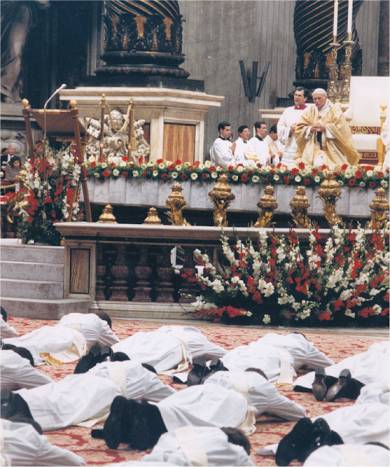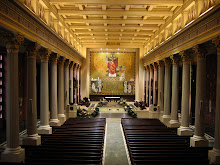Question of the day:
Why did Archbishops Elect Lucas (Omaha) and Aymond (New Orleans) get pallia today, but Archbishop Schnurr here in Cincinnati did not? He is an archbishop, too, no?
Answer, as I see it:
A diocese only has one Ordinary, with full juridical authority, at a time. (Auxiliary bishops have authority that is deputed to them by the Ordinary (main) bishop.) When a successor is named to a diocese, the current office holder is no longer the Ordinary, but is placed as administrator until his replacement is in the Chair, so to speak. The newly appointed 'elect' bishop does take some authority, at least I think so.
In the case of a Co-adjutor Archbishop, such as we currently have here in Cincinnati, he does not have the full authority yet until his predecessor either retires or dies, for a Co-adjutor is technically an auxiliary, even if he has the title of Archbishop, as is the case here.
Archbishop Schnurr will receive the pallium when he becomes the Ordinary of the Archdiocese of Cincinnati.
On a somewhat related note, I saw somewhere about Joseph Ratzinger/Pope Benedict's on again, off again relationship with a pallium. He had it when he was Archbishop of Munich/Freising, lost it when he was named to the CDF, and got it again (?) when he became Dean of the College of Cardinals, which comes with appointment as Cardinal Deacon of the Suburbicarian Diocese of Ostia in Rome. Of course, he has it now as the Holy Father. (These details are a bit sketchier, especially the details about which Cardinals have or do not have the pallium. I think they have to be territorial Archbishops to have it, yes?)
Subscribe to:
Post Comments (Atom)










2 comments:
According to Mike Aquilina on today's edition of the Sonrise Morning Show, the pallium is a symbol of the ordinary's teaching authority in a particular diocese. When a bishop gets moved, he must petition for a new pallium. When he retires, he may no longer wear a pallium.
So when Cardinal Ratzinger was head of the CDF he likely was not also the ordinary of a diocese (like Ostia or now Rome since as the Holy Father he's also the Bishop of Rome). That's my guess.
Canon 437 (see here) seems to cover this.
Post a Comment